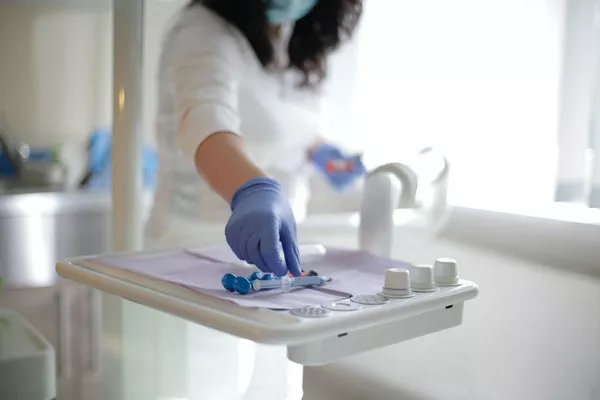In today’s fast-paced world, the need for quick and effective solutions is more important than ever. This holds true in the realm of dental care as well. When you find yourself facing a minor toothache or discomfort, knowing what to fill a tooth with at home can be a valuable skill. This article delves into the essential DIY dental care solutions to help you address these concerns promptly and effectively.
1. Clove Oil – Nature’s Anesthetic
Clove Oil: is renowned for its natural anesthetic properties. It contains eugenol, a powerful analgesic, and antimicrobial compound. To alleviate tooth pain at home, follow these steps:
a. Ingredients and Preparation:
3-4 drops of clove oil
A cotton ball
b. Application:
Soak the cotton ball in the clove oil.
Gently place the oil-soaked cotton ball on the affected tooth.
Leave it on for 20-30 minutes.
Clove oil not only eases the pain but also combats bacteria, promoting a faster healing process.
c. Additional Tip:
Clove oil can be intense, so dilute it with a carrier oil if you experience sensitivity.
2. Dental Wax – Seal the Gap
Dental Wax: is a versatile product used for sealing cavities or gaps. Here’s how you can use it to fill a tooth at home:
a. Ingredients and Preparation:
Dental wax strips or rolls
b. Application:
Ensure the affected tooth is clean and dry.
Cut a small piece of dental wax.
Soften the wax by rolling it between your fingers.
Carefully place the softened wax over the gap or cavity.
Mold and shape it to cover the affected area effectively.
Dental wax provides a temporary solution, offering relief until you can see a dentist for a more permanent fix.
3. Temporary Filling Material – A Short-Term Solution
Temporary Filling Material: is designed for quick, temporary fixes and can be a lifesaver when you’re in pain. Follow these steps to use it effectively:
a. Ingredients and Preparation:
Temporary filling material kit
b. Application:
Clean the tooth and ensure it’s dry.
Follow the instructions on the kit to mix and prepare the filling material.
Carefully fill the cavity or gap with the material.
Shape it to match the contour of the tooth.
Temporary filling material is excellent for addressing lost fillings, small cavities, or chipped teeth until you can visit a dentist for a professional assessment.
c. Note:
This solution is not a substitute for professional dental care. It provides relief until you can receive proper treatment.
4. Saltwater Rinse – Natural Healing
Saltwater Rinse: is a simple yet effective home remedy that can help alleviate discomfort and promote oral health. Here’s how you can prepare and use it:
a. Ingredients and Preparation:
1 teaspoon of salt
8 ounces of warm water
b. Application:
Mix the salt with the warm water until it dissolves.
Rinse your mouth with the saltwater solution for 30 seconds.
Spit out the mixture.
This saltwater rinse can help reduce inflammation, combat bacteria, and provide temporary relief from toothaches.
5. Over-the-Counter Dental Cement – A Handy Fix
Over-the-Counter Dental Cement: is a readily available solution that can be used to address minor dental issues at home. Here’s how to use it:
a. Ingredients and Preparation:
Dental cement kit
b. Application:
Clean and dry the affected tooth.
Follow the instructions on the kit to mix the dental cement.
Apply the cement to the cavity or gap.
Shape and mold it to fit the tooth’s contour.
Dental cement offers a quick fix for minor dental problems, such as loose crowns or lost fillings, until you can seek professional dental care.
Conclusion
Knowing what to fill a tooth with at home can provide you with temporary relief and peace of mind when faced with dental discomfort. From the natural analgesic properties of clove oil to the convenience of dental wax, temporary filling material, saltwater rinses, and over-the-counter dental cement, you have a range of options to address minor dental issues.
Related Links:
How many visits for a dental implant?
What are the parts of a dental implant?
What to Do if dental implant crown falls out?





























